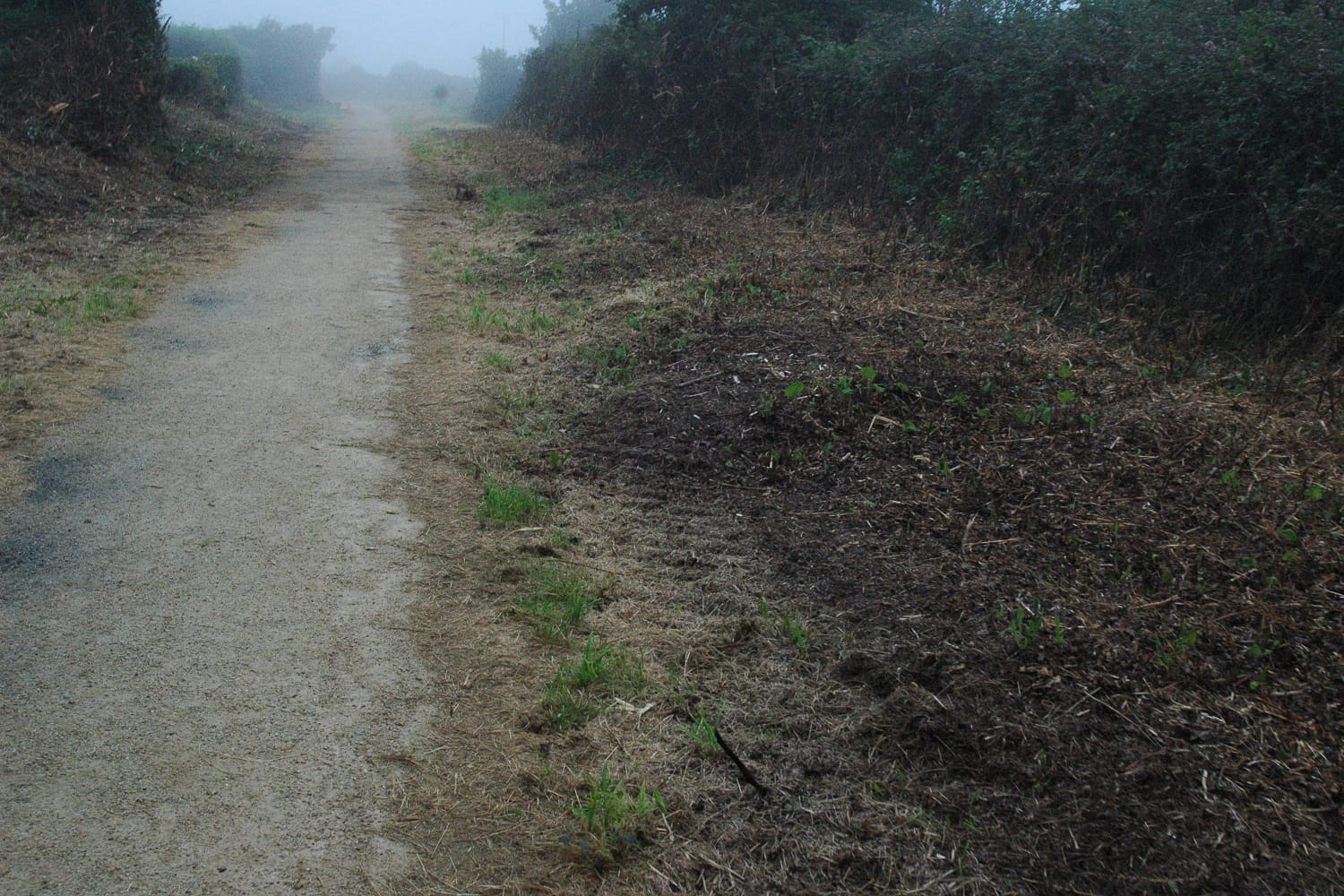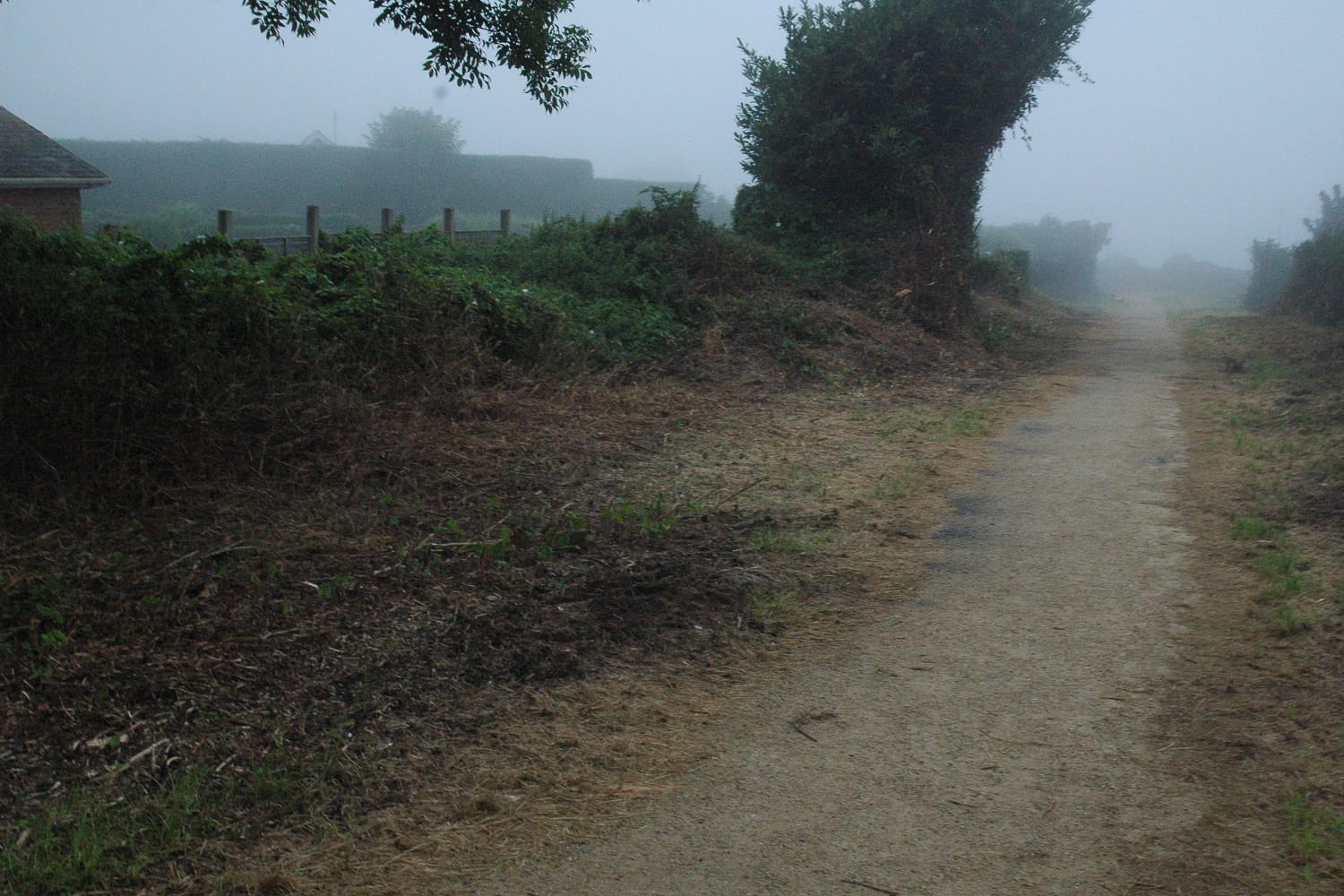What’s the best way to tell area residents about plans for a new asylum shelter nearby?
The government should tell communities directly about plans for new asylum shelters, some activists and politicians say.
“There was absolutely no need for this big tractor to come along and literally annihilate everything.”

It took Molly May O’Leary a few moments to process that the vegetation along the tramway in Howth had been razed.
Just after 7.30pm last Thursday, the poet and artist passed through the newish steel gates at the trail’s entrance on Balkill Road. A mist hugged the hill. Overhead, a couple of eager bats zipped about.
Only a few weeks earlier, O’Leary had been out here making a bouquet of flowers for her aunt, she said. “There were wildflowers everywhere.”
But now broken branches and clumps of browning grass lay either side of the yellow grit path. The leaves, briars and fuschia were gone. The muddy ground was scarred by track marks from a piece of heavy machinery.
A spokesperson for Fingal County Council said that it had hired a contractor to trim the hedges after complaints from the public that the vegetation was encroaching onto the path.
“It was extremely disconcerting to discover that the appointed contractor went way beyond what they were instructed to do,” they said.
Nicole Dunne, who runs the Howth Foraging walking tours, said the works were devastatingly excessive.
Especially given that now is nesting season, she said. “There was absolutely no need for this big tractor to come along and literally annihilate everything.”
A week earlier, on 3 August, Social Democrats councillor Joan Hopkins had walked down the tramway and the scene was picturesque, she says. “It was lush, it was green, and if you could’ve heard it, it was full of life, buzzing and singing.”
She took a photograph. When she returned that afternoon, the hedges had been cut away and the seat had been broken off a bench, she says. “It was devastating to see that.”
The bench was damaged accidentally during the cutting, a council spokesperson says. “The flail driver was reversing back to allow a citizen with a buggy to pass by when the flail accidentally reversed into the bench causing damage.”
It has since been replaced, they said.


Of more concern, Hopkins says, is why a machine of that size was in the area to begin with. “My issue is with how we are approaching biodiversity.”
Nesting season for most garden and countryside birds runs from 1 March to 31 August, according to Bird Watch Ireland.
A flail should not have been used during that period, Hopkins says. “They should have a handheld tool that cuts back individual branches.”
Under the Wildlife (Amendment) Act of 2000, cutting hedgerows is restricted during this nesting season, and it’s an offence if vegetation on uncultivated land is cut or destroyed.
But there is an exemption under the Wildlife Act for reasons of public health and safety and to make the walkway safe for public use, said a Fingal County Council’s spokesperson.
After complaints from the public, the council inspected the trail, they said. “It was found that the sides of the tramway path were encroaching and briars were visibly hanging at head height.”
The council told the contractor to trim back the encroaching vegetation to make the walkway safe for pedestrian use, they say. Of the trail, which runs for approximately 1.3 kilometres, 600 metres was cut.
The spokesperson wouldn’t identify the contractor.
Dunne, who runs the Howth Foraging walking tours, was fuming when she saw how much contractors had cut the hedgerows, she says. “It was literally buzzing here before.”
She lists off some of the wildlife found along the trail.
There are hedge sparrows, field mice, wrens, robins, meadow pipits, pine martens and shrews, the last of which are endangered, she says. “I could hear the thrushes and blackbirds calling, and I’m not hearing them now.”
Howth also has native honey bees, known as apis mellifera mellifera or the black bee, she says. “They would be up there foraging away, and so were lots of different bumblebees and butterflies.”
A crab-apple tree was hacked to pieces, she says. “The tractor would have taken up garlic mustard, privet, dock leaves, hawthorn, blackthorn. There were so many beautiful brambles coming into fruit for the birds.”
When Dunne leads her Howth Foraging walking tours, she might bring along a pair of secateurs to trim rogue briars that might trip someone up, she says. “But, when I was up there, for me, there was nothing I’d trip over.”
In a biodiversity crisis, she says it should be expected that a contractor would know what they are doing. “Going along and just mowing everything, it’s actually catastrophic.”
Green Party Councillor David Healy says there’s a lack of knowledge. “People on the ground are missing a basic understanding and their legal obligations.”
He points to a nature-skills training pilot course, launched in May, as a collaboration between the National Parks and Wildlife Service and the Laois and Offaly Education and Training Board.
It is aimed at helping public-sector staff and contractors to develop their knowledge of nature and biodiversity, according to a press release from the Department of Housing, Local Government and Heritage.
Healy says he will be putting in a motion in September that recommends the council arrange such a course in Fingal. “Because obviously, we’ve got a problem.”
Dunne says it would be worthwhile for anyone working in Howth to be taught about the area by locals organising tours here. “Personally, they should have someone like me, someone passionate about nature.”
She would like to educate any workers on the butterflies that populate the stretch of the tramway that was cut down, she says. “I want to show them the peacock, meadow and tortoiseshell butterflies whose habitats they’ve destroyed.”
The tortoiseshell butterfly, she says, produces two generations in a summer. “The first batches of eggs are laid in April and May, and they start flying in June, July.”
“Then they lay eggs again, and those emerge in August,” she says. “You’ve just destroyed possibly the whole next season of tortoiseshell butterflies.”
Get our latest headlines in one of them, and recommendations for things to do in Dublin in the other.